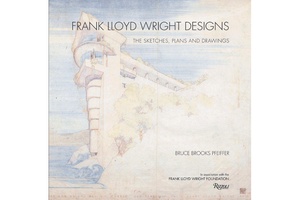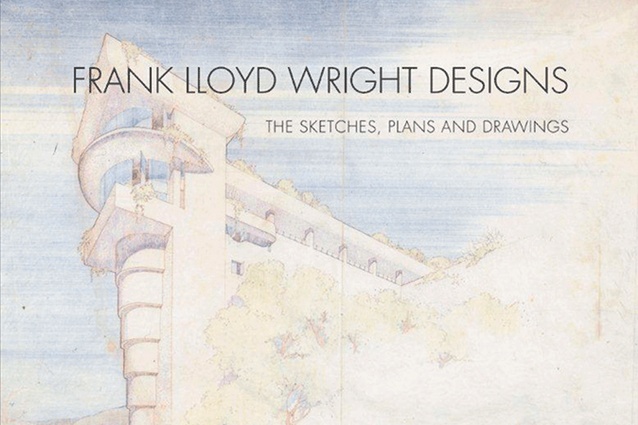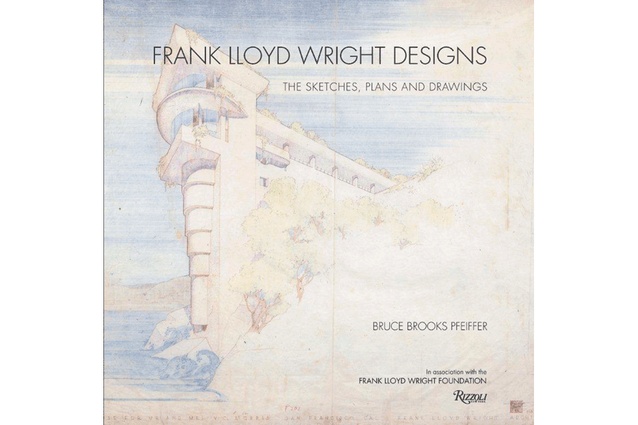Frank Lloyd Wright Designs

Frank Lloyd Wright Designs: The Sketches, Plans and Drawings. By Bruce Brooks Ffeiffer in association with the Frank Lloyd Wright Foundation; Rizzoli, NZ Distributor: David Bateman Ltd; 2011; $155.
I have to admit that I picked this book up more for the drawings than the architecture. I’ve never been a great fan of Frank Lloyd Wright but he has of course produced a lot of beautiful work, to use that old-fashioned term. And, the poor old bugger was fatally incapacitated by intestinal obstruction on the day of my birth, so I have always had a bit of an awkward awareness of him; it was an omen perhaps that my career would be less architect, more architectural haruspex.
Wright of course was the self-anointed “greatest living architect” of the last century, so what is initially surprising about this book is just how few of the drawings we are so familiar with are actually his. As the author, a long-time Taliesin Fellow and chief archivist of the Frank Lloyd Wright Foundation, admits “quite truthfully… mainly the work of draftsmen and apprentices”. I felt the same disappointment when I found out Walt Disney hadn’t personally drawn all those films and comics that I grew up with. But, once you get over that, it becomes fascinating as new windows are opened on how Wright worked and goes some way towards eroding the modernist myth of single omniscient genius that reached its excruciating climax in Ayn Rand’s awful Fountainhead, for which FLW was of course the inspiration.
Throughout this book the author takes pains to acknowledge actual artists and the talents of others in Wright’s orbit. However, as the text points out, these images are “from the mind rather than the hand of the architect…after all it was [Wright’s] aim to design and build fine buildings, not draw beautiful drawings” and for me this is the book’s Achilles heel. The drawings are entrancing in their large scale, high-production-value presentation, but they still serve only as portrayals of architecture rather than delightful things in their own right. The format focuses on individual buildings and projects, each illustrated by a variety of these sketches and perspectives. There is little sense of the actual size of the images and the glossy pages supplant the materiality of the drawings’ media, texture and scale, but to be fair, the title does give fair warning of the focus here.
As you would expect from the FLW Foundation, the text tends to the hagiographic, but it literally gives you new perspectives on Wright projects, built and unbuilt, and his working manner, as well as being peppered with some choice phrases from correspondence found in the Foundation collection. However, it is largely uncritical and makes no attempt to set the projects or the drawings in the context of their time. Despite this, you will find all your favourite Wright buildings in here, from the beautiful Prairie Houses to his frankly nutty Jetsons-with-bling period of the 50s. A nice summer read, but re-gift it after Christmas to a client: there could be an advantage in acquainting them with that old fashioned notion of architect as supreme genius.











